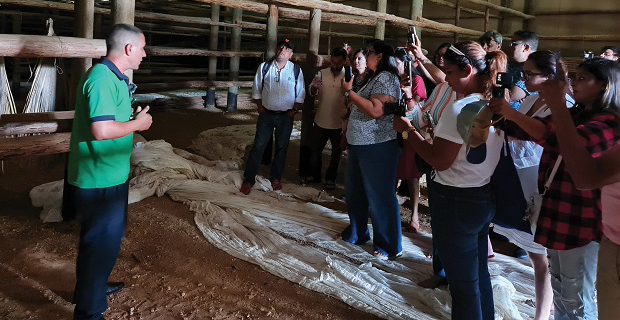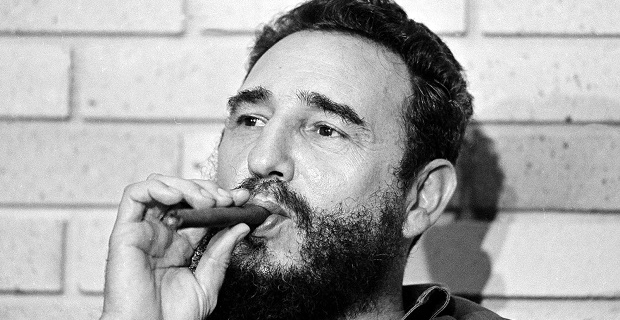CUBA A CHARMING LAND
One of my favorite places I’ve visited is Havana, Cuba. On my way home from Costa Rica, I spent a week in Havana. The colors, the music, the beautiful men and the cars! I love vintage and antique cars and own a couple myself. — Megalyn Echikunwoke
 Visit to a Cuban village tobacco factory where cigars are rolled, only to become expensive brands in international markets
Visit to a Cuban village tobacco factory where cigars are rolled, only to become expensive brands in international markets
A nation steeped in history
Edilber, Ismar and Mario—our guides during different stretches of our nearly 1,200 km bus journeys across the island—spoke to us about the proud heritage of the Cuban people.
About 5,000-6,000 years ago, Cuba belonged to the First Nations people, mainly the Guanahatabey and Taíno. At the time Christopher Columbus discovered the West Indies over 500 years ago, the Taíno were spread across not just Cuba but parts of the Greater Antilles that include Dominican Republic, Haiti, Jamaica, Puerto Rico and the Cayman Islands. Unlike the Guanahatabey who were hunters and gatherers, the Taíno were primarily agriculturalists. Even today, they have revivalist communities. In a way, the Taíno were the first people to greet Columbus. Little did they know that their destiny would be completely rewritten in times to come by the Spanish Conquistadors.

Overhearing the gossipers in the heart of Camagüey city, a UNESCO World Heritage Site
By the turn of the 16th century Cuba had become a colony of Spain, and the Spaniards had begun to create permanent settlements across the island. Over time, Cuba became a melting pot of sorts with the European Spaniards mixing with the local indigenous population, mainly the Taíno and the African slaves who’d been drafted in from across the Atlantic Ocean to work mainly on the sugarcane, coffee and tobacco plantations. The confluence of several cultures is very characteristic of the vibrancy one can feel in Cuba today. Spanish remains the lingua franca, but for large groups of tourists from across North America, Europe, Asia, Caribbean and Africa there are several translators, guides and commentators who speak English, German, Portuguese, Dutch and Russian.
Slavery was abolished in 1886 and Cuba remained the last colony of Spain until 1898. In that year, Cubans, after decades of long struggle against the colonial yoke, saw their aspirations for independence truncated with the intervention of the United States and the imposition of a neocolonial republic. The result of that period were several military interventions by the United States, the political and economic control of the island and the illegal imposition of a military base in the territory of Guantánamo, which still persists today against the will of the Cuban people.
After implementing a new Constitution in 1940, the country witnessed a coup in 1952 by Fulgenico Batista. But this Government was not to last very long. Following the 26th of July Movement during the widely known Cuban Revolution, the Batista regime was overthrown and Communist rule under Fidel Castro’s leadership was established. Shortly after taking over he proclaimed, “Ours was the last country to get rid of Spanish colonialism and the first to shake off the heinous imperialist tutelage.”

The legendary and charismatic Fidel Castro served Cuba as Prime Minister and President between 1959 and 2008
The young revolution faced all kinds of pressure from the United States, from a mercenary invasion in 1961. In 1962, the Cuban Missile Crisis nearly led to an outbreak of a World War between the Soviet Union and the U.S., but it was avoided through some serious diplomatic negotiations at the time.











Comments.